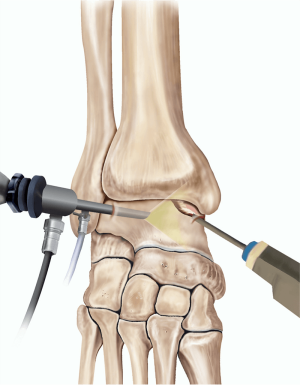
Arthroscopy is a minimally invasive surgical procedure used to diagnose and treat problems in the joints of the foot and ankle. During an arthroscopy procedure, a small camera called an arthroscope is inserted into the joint through a small incision, allowing the surgeon to see inside the joint and make any necessary repairs or corrections.
Arthroscopy can be used to diagnose and treat a variety of conditions in the foot and ankle, including:
- Ankle instability
- Arthritis
- Tendon tears or injuries
- Ligament injuries
- Cartilage injuries or defects
- Loose bodies in the joint
Arthroscopy is typically performed under general or regional anaesthesia, and patients can usually go home the same day as the procedure. The surgeon will make one or more small incisions in the skin near the joint and insert the arthroscope and other surgical instruments.
During the procedure, the surgeon will use the camera to visualise the inside of the joint and perform any necessary repairs or corrections. Once the procedure is complete, the incisions will be closed with stitches or surgical tape, and a bandage or brace will be applied to the foot and ankle.
Recovery time after an arthroscopy procedure can vary depending on the extent of the procedure and the individual’s overall health. Patients will typically need to limit weight-bearing activity for a period of time and may need to use crutches or a walking boot to assist with mobility.
Physical therapy may also be recommended to help improve strength, flexibility, and range of motion in the foot and ankle. With proper care and rehabilitation, most patients can expect to return to normal activities within a few months after the procedure.
